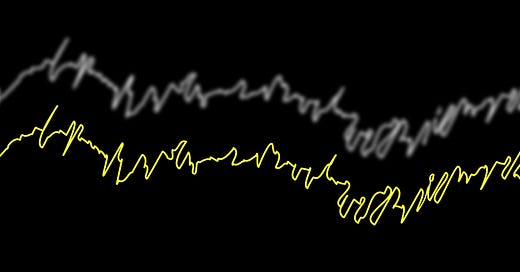Weekly Roundup: Your Biased Brain, Short-Term Memory, Deep Brain Waves, and Brain Waves for Action
A weekly roundup of recently published research on all things in the brain and mind.
This week I’ll take you through a bunch of interesting stuff moving from biases in the brain, short-term memory, brain waves, and the hippocampus which is, maybe surprisingly, involved in all of the above.
Let’s start off with our biased brain. We know we are biased, yet most of us think we are less biased than others, known as the bias blindspot. And most of us don’t think about these.
Two biases have now been shown to be directly related.
Your Biased Brain
The first, you will likely be familiar with, is recency bias whereby recent events, objects, actions are easier to recall and take priority in our brains.
The other is something called the central tendency bias: whereby we tend to judge things closer to the average than their actual characteristics. If I showed you different cartons of milk and then asked you to remember their size, you would most likely judge the larger ones to be smaller and closer to the average carton size (in your country), and the smaller ones to be larger and closer relative to this average size.
However, research has now shown that this is due to slower integration of information on the brain and underpins both biases. Basically we can take a simpler model - your brain needs to process this information and uses various regions notably a region called the posterior parietal cortex (PPC).
This is slower to integrate and this causes working memory imbalances but also if you remove this part of the network, the central tendency bias also disappears. Basically your short-term memory is inaccurate and this causes these biases.
Hmmm what to do about it?
Well, obviously being aware of our biases does help - but new work on short-term memory has also shown how this works.
New Insights Into Working Memory
Working memory, short-term memory, is particularly important for us because this contributes to what is known as fluid intelligence and helps us operate in the real world: from remembering what someone said in a meeting, to remembering things in the longer term (if you can’t remember short-term you can’t remember long term), remembering your list of to dos, and subsequent ability to focus.
There have been different models of working memory: one is that neurotransmitters hang around between neurons enabling longer activation of that particular circuit. Nice, but wrong. New research shows that it is actually two sets of neurons working together.
Keep reading with a 7-day free trial
Subscribe to leading brains Review to keep reading this post and get 7 days of free access to the full post archives.




